Dogs have an extraordinary ability to bring comfort and joy at every stage of life, but their gentle nature often makes them especially cherished companions for the elderly. Beyond providing endless affection, the right dog can offer emotional support, reduce loneliness, and even inspire a healthier, more active lifestyle. Spending time with a calm, friendly pup can lower blood pressure, ease stress, and lift spirits — all while creating a sense of purpose and daily routine.
For seniors, the companionship goes both ways. Many retirees have more time at home, offering dogs the consistent love and attention they crave. This mutual bond creates a harmonious rhythm, where every wagging tail and quiet moment shared becomes a source of comfort and happiness.
Of course, not every breed is the right fit. Some are simply better suited for senior lifestyles — calm, patient, and easy to care for. Let’s explore the dog breeds celebrated for their gentle approach and why they make such incredible partners for those in their golden years.
Dog Breeds Known For Their Gentle Approach With The Elderly
1. Cavalier King Charles Spaniel
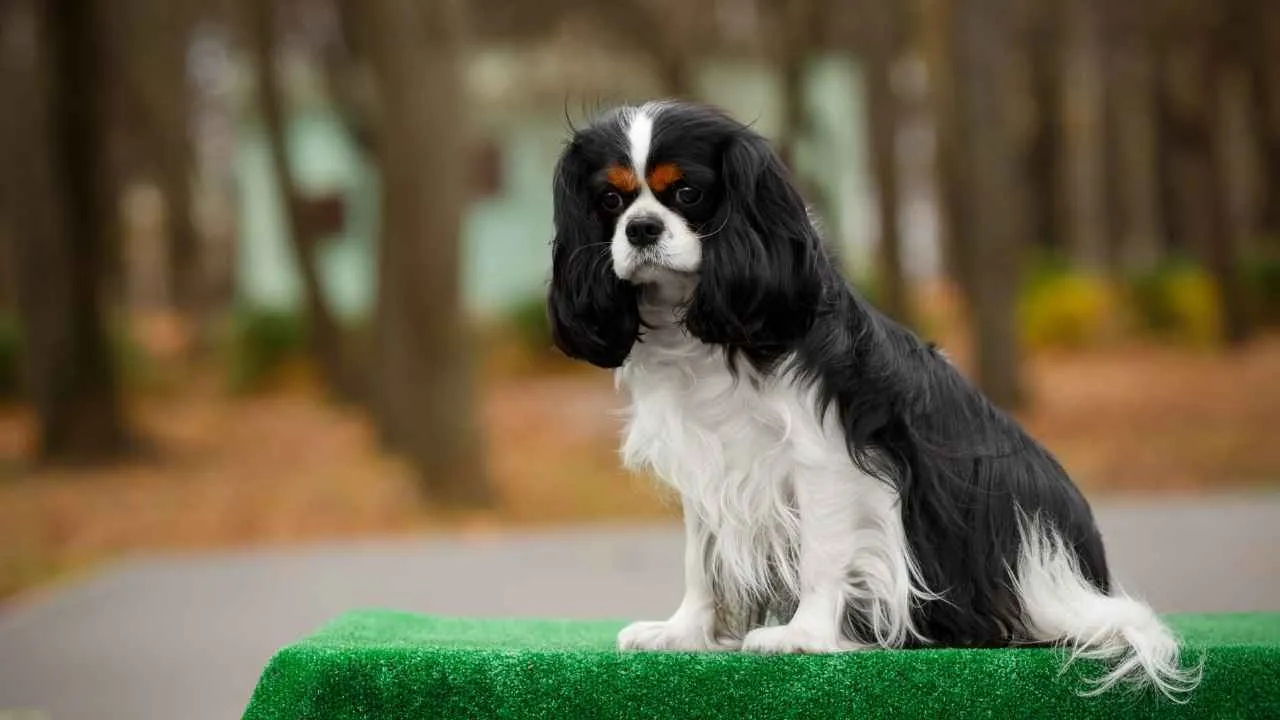
The Cavalier King Charles Spaniel, fondly called the “Cavalier,” is a toy breed that blends elegance with warmth. The AKC describes Cavaliers as embodying the best of both worlds, blending the gentle, affectionate nature of a toy breed with the lively energy and athletic ability of a sporting spaniel.
Originating in Britain and named after King Charles II, this breed stands around 12–13 inches tall and weighs 13–18 pounds. With a silky, feathered coat and soulful, round eyes, the Cavalier exudes charm and affection. Known for its adaptability, it fits seamlessly into various lifestyles, making it an excellent choice for seniors seeking a devoted and gentle companion.
These dogs thrive on human company, love curling up on a cozy lap, and are welcoming toward children, other dogs, and visitors alike. Their calm temperament and patient nature are hallmarks that endear them to elderly owners looking for steady companionship.
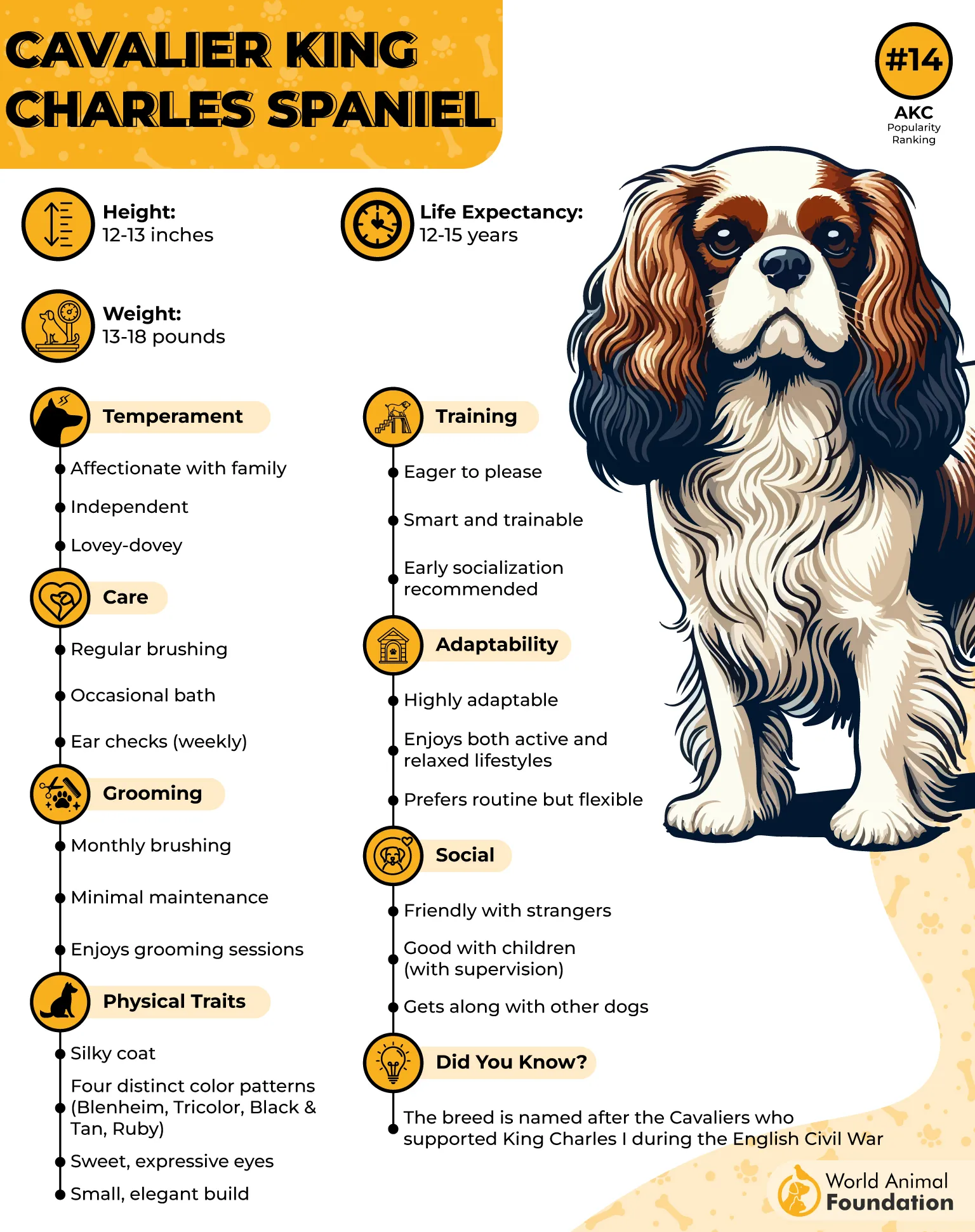
Exercise
Cavaliers don’t demand intense workouts—they prefer moderate activity that mirrors their owner’s pace. A couple of brisk walks paired with playful moments in a secure yard or living room keep them healthy and content.
They are equally happy to spend quiet days indoors, making them ideal for seniors who enjoy leisurely strolls rather than vigorous outings.
Fun Fact: Cavaliers were once constant companions of King Charles II, reportedly following him everywhere—even into royal meetings.
2. Golden Retriever
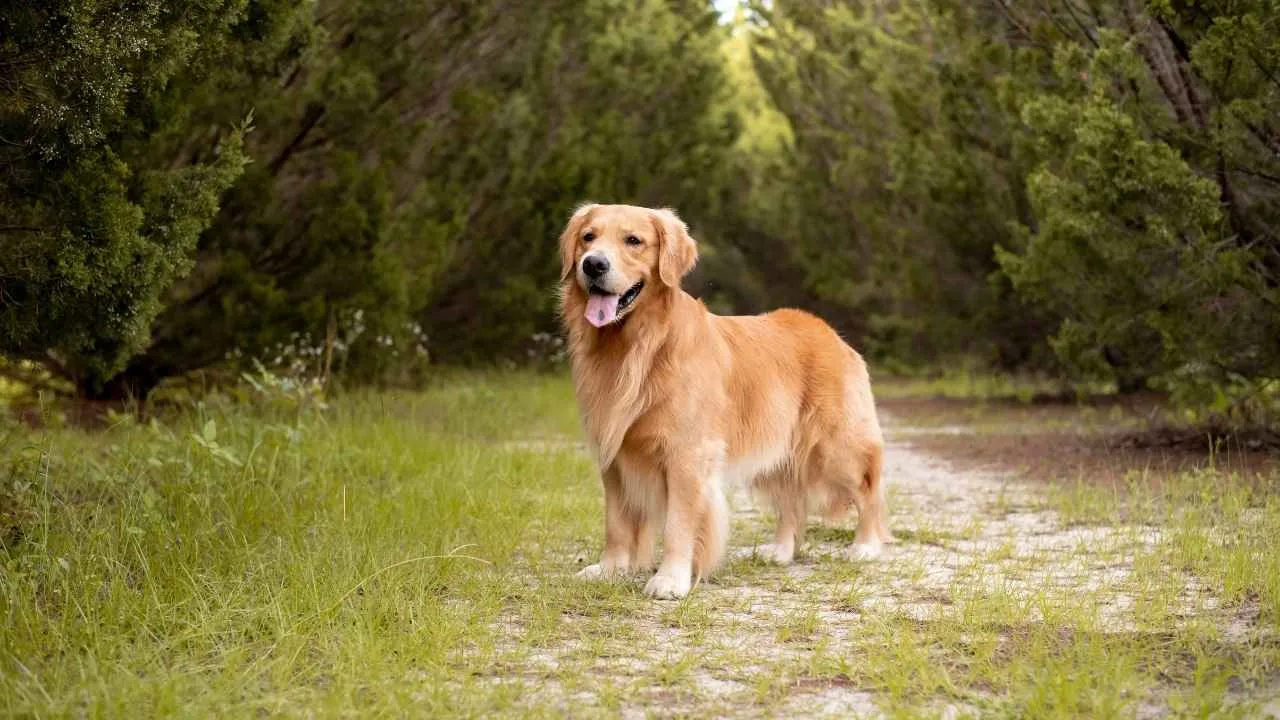
The Golden Retriever is one of the most beloved dog breeds, known for its gentle temperament and affectionate nature. Originating from Scotland in the 19th century, this ancient breed was developed by Lord Tweedmouth at the Guisachan estate to be the perfect gundog, excelling in retrieving waterfowl.
Today, Golden Retrievers are cherished for their friendly, tolerant personalities and intelligence, ranking third in obedience and working intelligence. WebMD notes that they feature a wide head, short ears, a straight muzzle, and warm, friendly eyes.
Standing 21–24 inches tall and weighing 55–75 pounds, they have a sturdy, muscular frame and a signature golden, feathery coat. Goldens belong to the Sporting Group and live an average of 10–12 years. Their combination of patience, loyalty, and eagerness to please makes them exceptional companions for elderly individuals, offering both emotional support and unwavering devotion.

Exercise
Golden Retrievers are active dogs that thrive on daily activity. They need around two hours of exercise per day, ideally broken into multiple sessions, including walks, running, or swimming—one of their favorite pastimes. This consistent activity not only maintains their physical health but also keeps their sharp minds engaged, reducing restlessness.
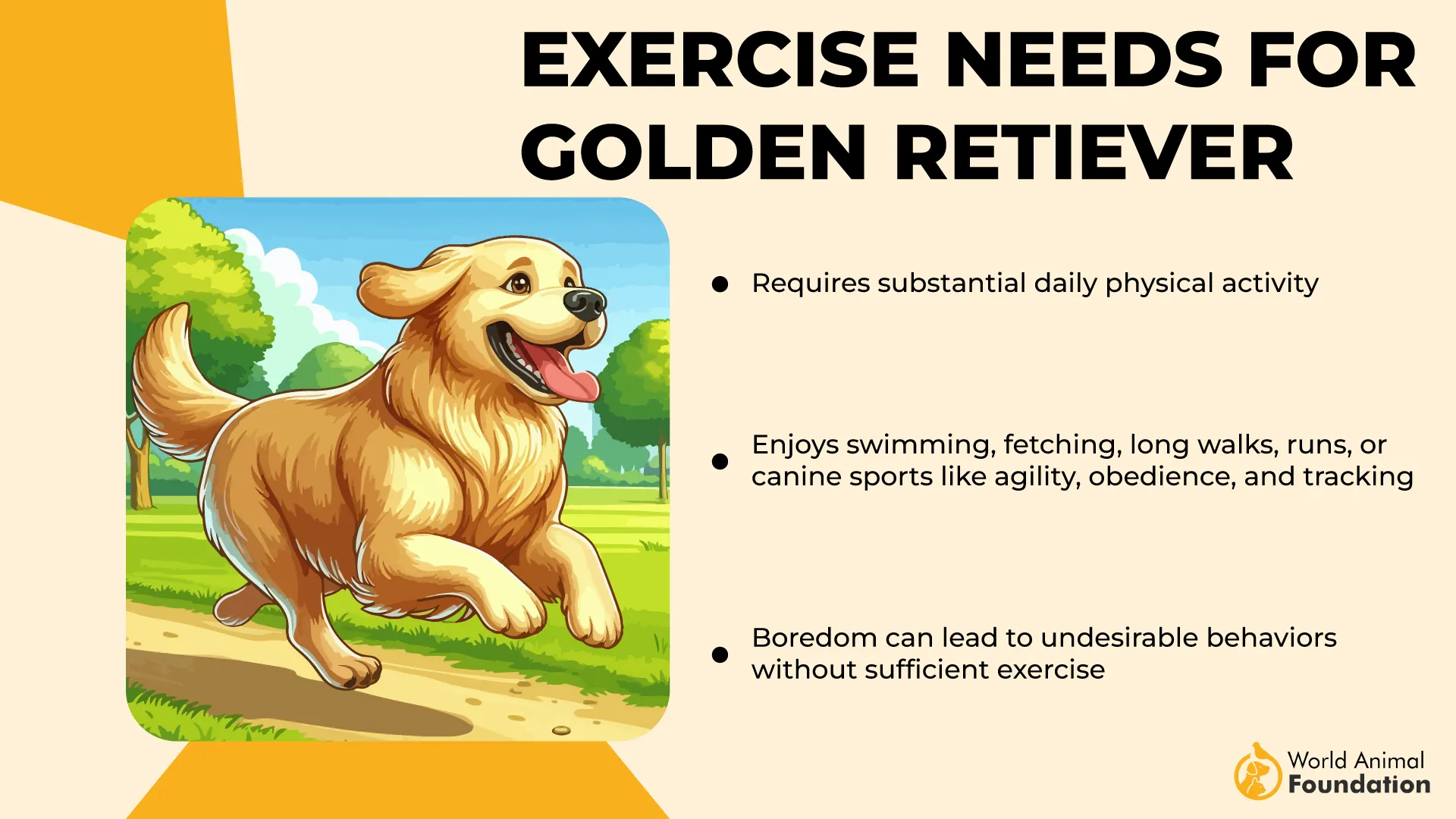
Fun fact: Golden Retrievers are frequently chosen as therapy dogs thanks to their natural empathy and calming presence, making them one of the best companions for seniors.
3. Labrador Retriever
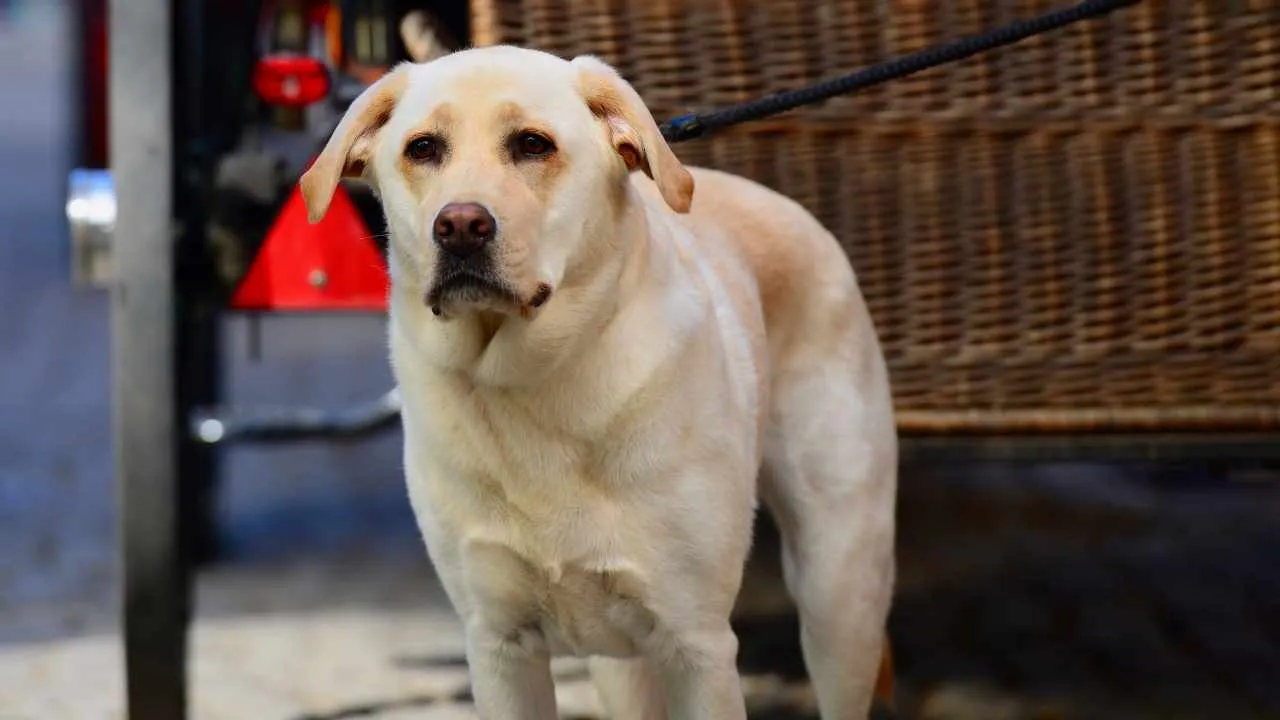
The Labrador Retriever, often simply called the Lab, is one of the most beloved and recognizable breeds worldwide. Originating from Newfoundland and later refined in England, this friendly and affectionate dog is cherished for its even temperament and versatility.
Labs typically stand 21.5 to 24.5 inches tall and weigh between 55 to 80 pounds, with their iconic “otter tail,” soulful eyes, and dense coat in shades of yellow, chocolate, or black.
Known for their patience and loyalty, they thrive in households with seniors, offering both emotional support and joyful companionship. Their highly trainable nature makes them an ideal match for those who prefer a dog that’s eager to please and easy to manage.

PetMD advises that supervision remains essential when initially introducing a Labrador to new family members.
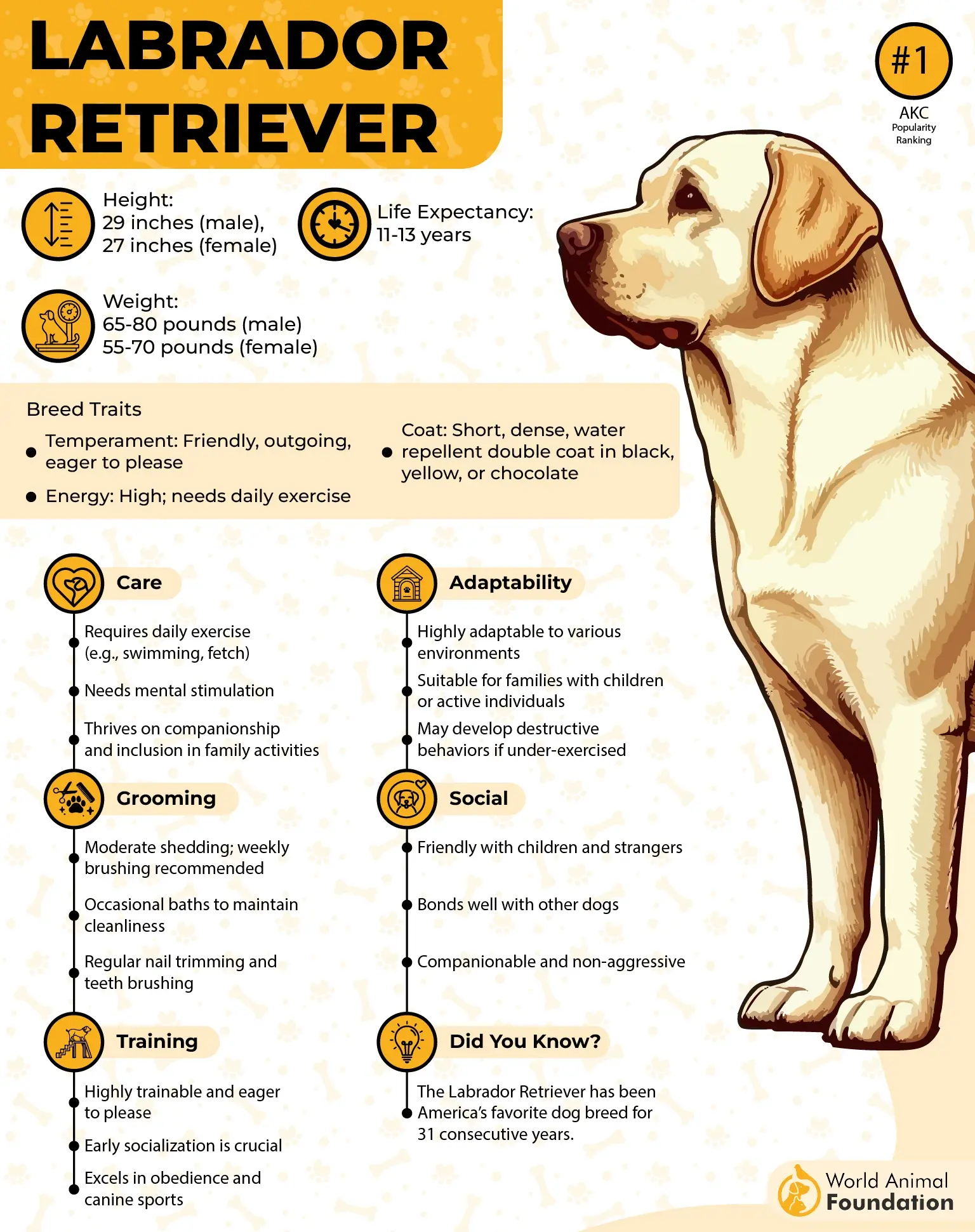
Exercise
While Labradors are gentle housemates, they have high energy needs that shouldn’t be overlooked. A healthy adult Lab benefits from about two hours of daily activity, including brisk walks, swimming, or engaging games of fetch.
This not only maintains their fitness but also keeps their mind sharp and spirits high, ensuring they remain a happy companion for older adults.
Fun Fact: Labrador Retrievers are so reliable and even-tempered that they’re one of the most popular choices for therapy and assistance work worldwide.
4. Pug
The Pug, fondly called the “clown of the canine world,” is a compact and affectionate breed with an unmistakable wrinkled face and large, soulful eyes. Originating in China, these small yet sturdy dogs were once treasured by emperors and later adored by European royalty.
Standing 10–13 inches tall and weighing 14–18 pounds, Pugs have a short, smooth coat that comes in fawn, apricot, silver, or black. Their charming expressions and even temperament make them one of the most beloved companions for seniors seeking a low-maintenance, cheerful pet.
With an average lifespan of 12–15 years, Pugs thrive in close contact with their humans, offering endless moments of joy.
Exercise
These small dogs are naturally laid-back but still need gentle daily activity to stay healthy. Short walks and a few minutes of playful interaction indoors or in the yard are usually enough—about 30 minutes a day. Care should be taken in hot or cold weather due to their flat faces, as extreme conditions can strain their breathing.
Fun Fact: A group of Pugs is delightfully called a “grumble,” a nod to their adorable snorts and snuffles.
5. Miniature Schnauzer
The Miniature Schnauzer is the smallest of the Schnauzer trio, bred down from the Standard Schnauzer in late 19th-century Germany. Standing 12 to 14 inches tall and weighing 11 to 20 pounds, these sturdy little dogs boast a wiry double coat and their signature bushy beard and eyebrows that give them a distinctly human-like expression.
Known for their friendly, spirited personality, they are naturally alert watchdogs without being overly aggressive — a perfect mix for elderly owners seeking companionship and a sense of security.
They are also hypoallergenic, shedding very little, which makes them a good choice for seniors with allergies or those who prefer a low-mess pet. With a lifespan of 12 to 15 years, Miniature Schnauzers are loyal, adaptable, and thrive in both apartments and larger homes.
Exercise
Despite their compact size, Miniature Schnauzers have a playful streak and need at least an hour of daily activity to stay happy and healthy.
They enjoy relaxed walks with their owners, games of fetch, and mentally stimulating activities like puzzle toys. Their enthusiasm for companionship makes exercise less of a chore and more of an enjoyable bonding time.
Fun Fact: Their iconic beard wasn’t just for looks — it historically acted as protection while they hunted rodents and small animals on farms.
6. Pomeranian
The Pomeranian, often called the “Pom,” is one of the most adored toy breeds in the world and a delightful choice for seniors seeking a gentle, affectionate companion. This fluffy little dog, originally descended from larger sled-pulling Spitz breeds, stands 7 to 12 inches tall and typically weighs 3 to 7 pounds.
Despite its tiny frame, the Pom carries a confident, spirited personality wrapped in a plush double coat that comes in nearly two dozen colors, with orange and red being the most common.
Known for their intelligence, alertness, and lively nature, Pomeranians are natural watchdogs without being overly demanding. With a lifespan of 12–16 years, they provide years of joy and companionship while being manageable for elderly owners in both size and care needs.
Exercise
While Pomeranians are energetic, they don’t require intensive workouts. Two brisk daily walks of about 20 minutes each usually keep them happy and healthy.
Some Poms may crave longer strolls up to 30 or 40 minutes, especially if they enjoy being outside. Indoor play also counts as exercise, making it ideal for seniors who may not have large yards but can provide interaction and movement indoors.
Fun Fact: Pomeranians were long favored by royalty, including Queen Victoria, who helped popularize the breed in the 19th century.
7. Maltese
The Maltese, lovingly known as “Ye Ancient Dogge of Malta,” has been adored for centuries for its elegance and gentle nature. This tiny toy breed typically weighs under 7 pounds and stands just 7–9 inches tall, making it an ideal choice for seniors seeking a manageable companion.
Their silky, floor-length coat is a hallmark feature, though many owners prefer a shorter cut for easier upkeep. Known for their affectionate and adaptable temperament, Maltese dogs thrive on companionship and are especially cherished by older adults for their calm yet playful demeanor. With a lifespan of 12–15 years, they offer long-term devotion and joy.
Exercise
Despite their regal look, Maltese are hardy little athletes who enjoy short bursts of play and light daily walks. They don’t need strenuous activity—just a stroll around the block or some gentle indoor games will keep them content.
Their low-exercise needs make them perfect for seniors who prefer a relaxed routine, though they’ll happily join in for occasional spirited play.
Fun Fact: The Maltese has been a treasured lapdog since biblical times, often seen in the arms of royalty and aristocrats throughout history.
8. Havanese
The Havanese, the national dog of Cuba, is a cheerful little breed known for its affectionate and sociable nature. Standing 8.5 to 12.5 inches tall and weighing 7 to 13 pounds, these dogs belong to the Toy Group and live an impressive 14 to 16 years.
Their silky double coats, often seen in a variety of colors, paired with expressive eyes and curled-over tails, make them irresistible companion dogs. Havanese dogs are intelligent, playful, and adaptable, thriving in apartments or houses alike.
Their endearing personalities and gentle temperaments make them an excellent choice for seniors who desire a loyal, interactive friend without the demands of a high-energy breed.
Exercise
While Havanese love being close to their owners, they still need moderate daily activity to stay happy and healthy. About 30 minutes of exercise per day is ideal, split between short walks and playful indoor sessions.
Their moderate energy level means they’ll enjoy a brisk stroll but will be just as delighted with a fun game of fetch in the living room. This balance ensures they stay fit without overwhelming their elderly owners.
Fun Fact: The Havanese is the only dog breed native to Cuba, cherished for centuries as a symbol of warmth and companionship.
Conclusion
Choosing the best dog for seniors goes beyond finding a cute companion—it’s about selecting a breed that offers comfort, calm, and joy. Many popular dog breeds, like the Shih Tzu and French Bulldog, are known for their affectionate nature and some for their low-maintenance pet qualities, making them ideal for older adults seeking a quintessential lap dog without overwhelming demands. Their steady temperament and adaptability provide reassurance while fostering the emotional benefits of pet ownership.
At the same time, breeds like the Bichon Frise remind us that companionship comes in many forms. While some of these dog breeds for seniors require regular grooming, their affectionate demeanor and gentle ways outweigh the upkeep.
From dogs that shed very little dog hair to those whose breeds exhibit traits of loyalty and calmness, the right furry friend can bring warmth and joy to daily life. These companions prove that the bond between humans and dogs only grows richer with age.


